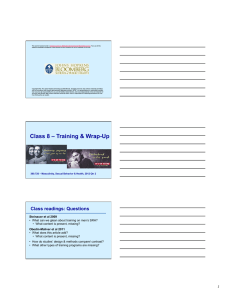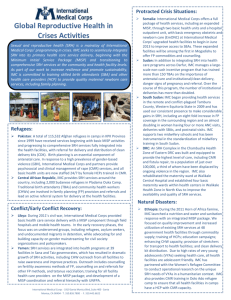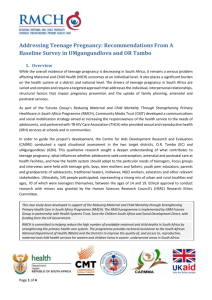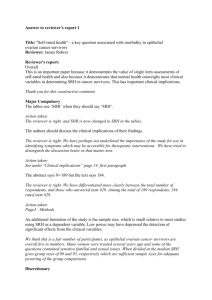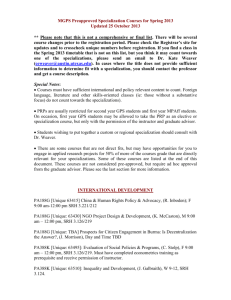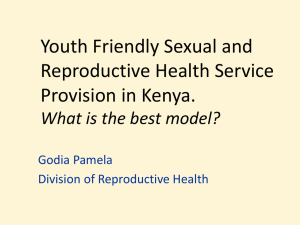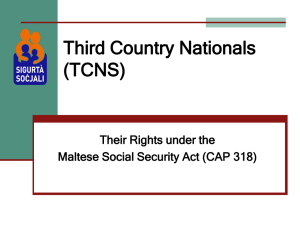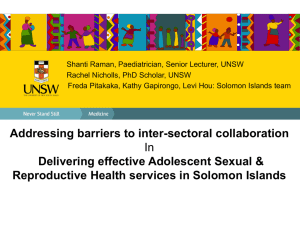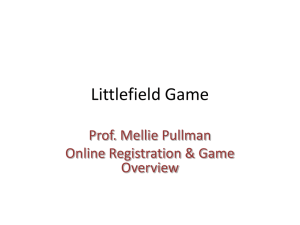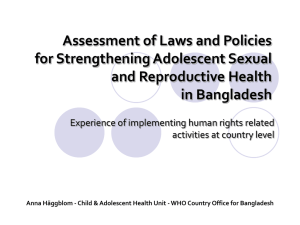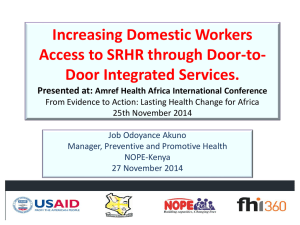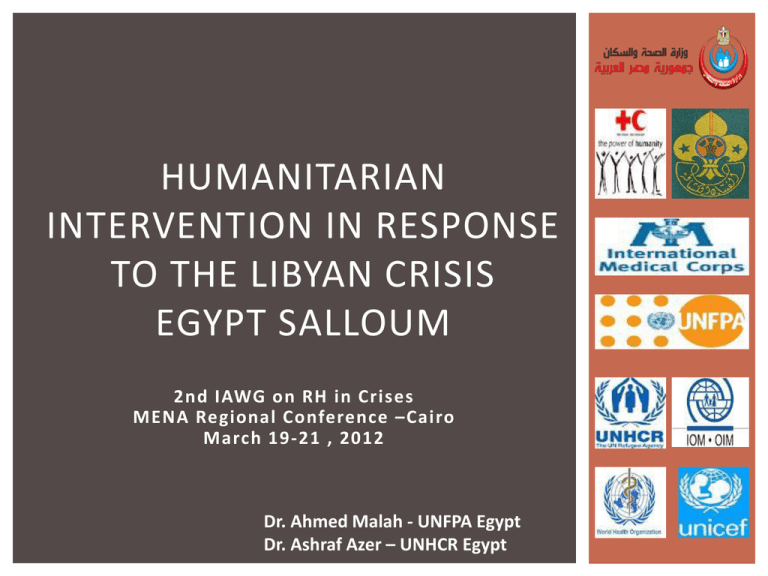
HUMANITARIAN
INTERVENTION IN RESPONSE
TO THE LIBYAN CRISIS
EGYPT SALLOUM
2nd IAWG on RH in Crises
MENA Regional Conference –Cairo
March 19-21 , 2012
Dr. Ahmed Malah - UNFPA Egypt
Dr. Ashraf Azer – UNHCR Egypt
OVERVIEW
Egypt was the first country hit by the crisis
stemming from Libya at the end of February,
receiving large numbers of Migrants and Egyptians
At end of September, IOM, in cooperation with the
border authorities, has recorded 226,200 persons,
including 140,642 Egyptians (62%) and 85,558 TCNs
(38%) crossing the border
Nationals from countries benefitting from a regime
of free movement with Egypt (mainly nationals
from Middle East countries) did not have to wait for
visa processing at the Sallum border crossing point.
OVERVIEW (Cont’d)
Large numbers of Egyptians among the fleeing
population and at one point, over 12,500 Egyptians
crossed the border on a single day with an
estimated total of 166,000 Egyptians have returned
home directly through the border but also by air,
ground and sea evacuation
By the end of September, IOM has repatriated from
Egypt more than 38,000 persons. Most of the TCNs
evacuated from Egypt were Chadians (45%) or
Nigerians (23%)
OVERVIEW (Cont’d)
UNHCR, IOM, UNFPA, UNICEF, OCHA, WHO, ICRC,
IMC and Egyptian Scouts were among the first UN
agencies, INGOs, NGOs establishing needed
Protection, Shelter, Health, Water, Sanitation, Food
, Psycho-social support responses for the stranded
population at the Port land site
WHO and IOM, in coordination with MOHP in
Matrouh governorate supported the Quarantine
Port land clinic to provide PHC services to the
stranded TCNs and PoCs
OVERVIEW (CONT’D)
Earlier in the crisis, the MoHP deployed its mobile
specialized clinics for TCNs and PoCs
Salloum and Matrouh hospital were rendered
accessible for referral health care services
Libyans were granted access to Alexandria and
Cairo referral hospitals and received a WHO and
UNHCR complementary 2ry and 3ry care health
services addressing injured Libyans and those
suffering from life threatening chronic illnesses
inclusive of TCNs and PoCs
RESIDUAL POPULATION CURRENTLY AFFECTED AMONG
PERSONS OF CONCERN TO UNHCR - Januar y 2012
Male
Total Population
1377
Number of women 15-49 yrs
Female
Total
377
1754
99
99
Number of infants < 1yr
36
35
71
Number of children <5yrs
55
63
118
KEY SRH INTERVENTIONS &
COORDINATION
WHO called for regular coordination meetings among
all humanitarian actors for sustaining health care
responses including SRH response for Libyans , TCNs
and PoCs to UNHCR
As a key SRH response 4,000 dignity kits (3,000 for
males and 1,000 for females) were procured by UNFPA
and transported and stockpiled by ERC at the border
30 baby kits were procured by UNFPA and stockpiled in
coordination with UNHCR
Most of the RH kits were procured internationally by
UNFPA and transported inside Libya by the Egyptian
and Libyan Red Crescent
KEY SRH INTERVENTIONS &
COORDINATION
Salloum Port land also benefited from Kits related
to contraception and HIV/STI prevention
UNFPA, UNHCR and FHI in coordination with MoHP
and Matrouh health district organized a MISP
training with focus on STIs, Protection and HIV
prevention, support and treatment responses
Referral services for women among TCNs and PoCs
including for Emergency obstetric care has been
also made available through the PHC clinic at the
Port land
MoHP Mobile clinics fleet deployment at Salloum
&
UNFPA procured Dignity kits
SRH RESPONSES STRENGTH
Partnerships between UN and Humanitarian NGOs actors
contributed to enhancing Health and SRH interventions to
the stranded population for the immediate Crisis situation
Coordination with the MoHP at the district level and with
other local NGOs (ERC) in delivering RH and Dignity kits was
key for an effective SRH intervention for the stranded
population
While RH and baby kits were provided for women,
modifying Dignity kits to meet the need of stranded
population (mostly males) was an example of evidence
based programming
SRH RESPONSES WEAKNESSES
Ongoing monitoring, assessment, surveillance and
responses to SRH needs in the Post crisis phase did not
receive sustained attention by all Humanitarian actors
Setting a monitoring, evaluation and reporting system at
MoHP Salloum clinic and at district level on the use of,
stock management and replenishment of RH and Dignity
kits, did not receive needed focus to accurately measure
impact on reducing morbidities and mortalities
Post crisis surfacing SRH issues including unprotected sex
among stranded vulnerable women involved in sex work and
effectively addressing the gender based violence and power
dynamics with incriminated men, did not receive a needed
comprehensive responses by all concerned actors
SRH in Crisis and Post crisis situations
Regional support
Compiling and disseminating a “Best practices and lessons
learnt” document on MENA Arab spring countries and other
regions examples of SRH comprehensive responses in Crisis
and Post crisis situations
Developing a Regional guidelines subject to a country by
country contextual adaptation and adoption of a National
M&E systems on SRH in Crisis and Post crisis situations
Developing a Regional guidelines that can best guide MENA
national responses on operational research , surveillance
and surveys studies in SRH Crisis and Post crisis situations
THANK YOU

